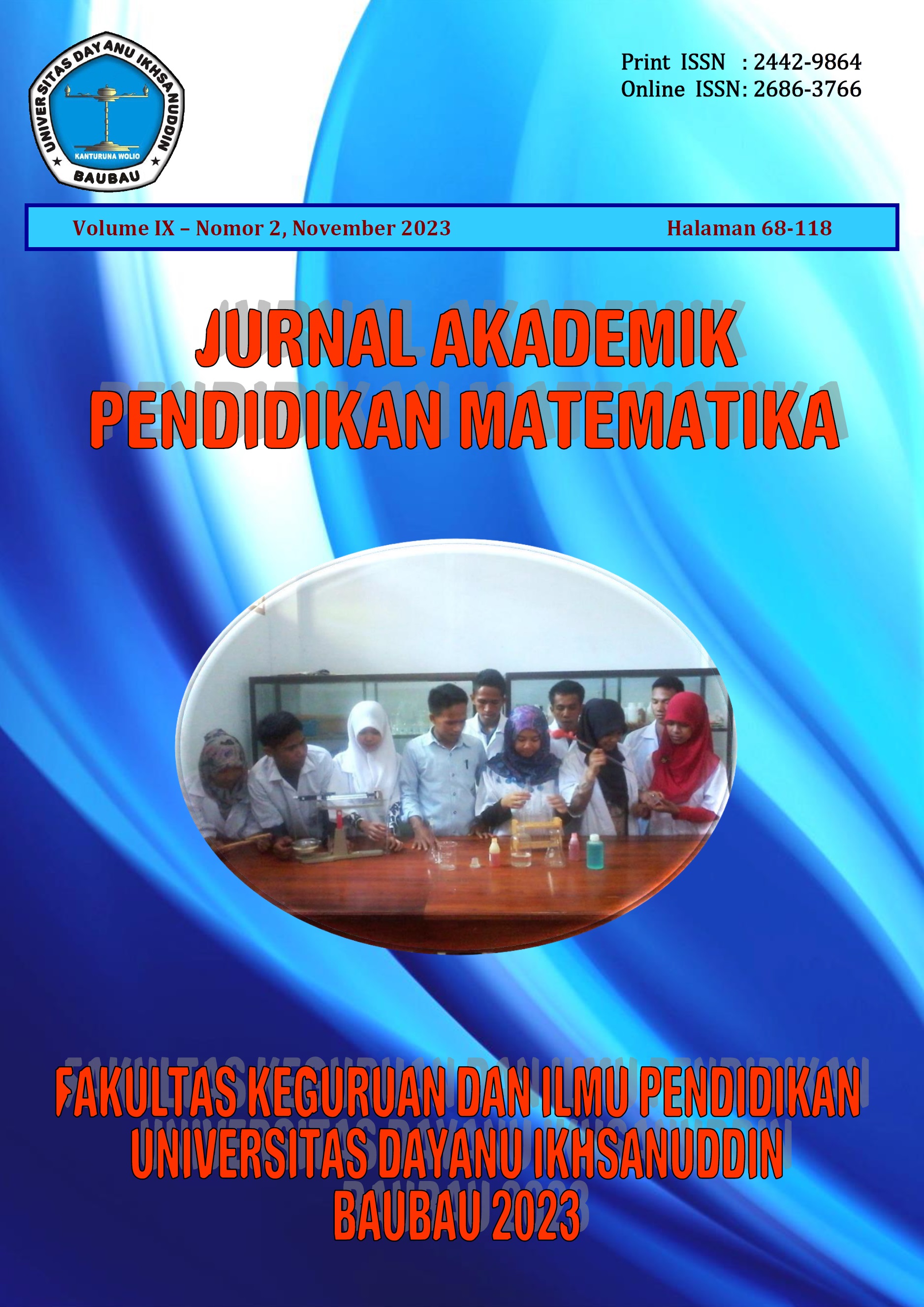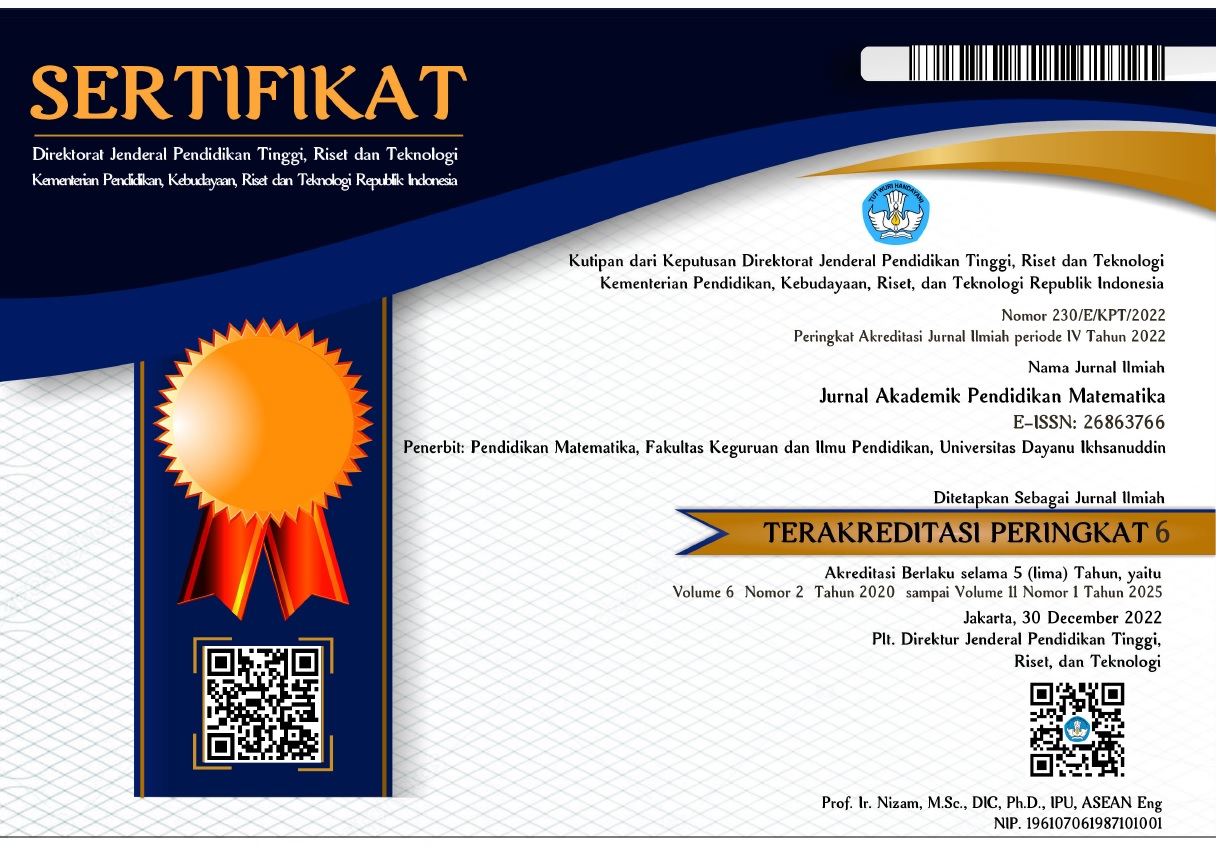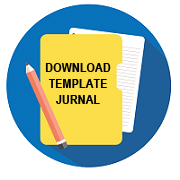Students’ Mathematical Literacy Based On Visual Learning Style At Junior High School
DOI:
https://doi.org/10.55340/japm.v9i2.1579Keywords:
Mathematical Literacy, Learning Style, VisualAbstract
Mathematical literacy is the ability that students must have to face 21st-century challenges. Related to this, students have learning styles that influence the way students absorb and process information, namely: Visual, auditory, and kinesthetic. This research focuses on describing the mathematical literacy of junior high school students in each indicator classified from the visual learning style. This type of research is descriptive qualitative research. The steps in this study were to compile the learning style questionnaire sheet and mathematical literacy tests; ask students to fill out questionnaires and ability tests; and analyze the results of the learning style questionnaire and student answers on mathematical literacy tests. The subject of the study consisted of 49 class VIII junior high school students, and then the subject was reduced to 6 students. The findings show that: 1) Students with visual learning styles have mathematical literacy in the range of levels 1 to level 2; 2) Visual students have characteristics of answering briefly and difficulty choosing words. The results of this study can be used as consideration in determining treatment in the teaching and learning process in class to increase student mathematical literacy.
Downloads
References
Aisami, R. (2015). Learning Styles and Visual Literacy for Learning and Performance. Procedia - Social and Behavioral Sciences, 176, 538–545. https://doi.org/10.1016/j.sbspro.2015.01.508
Benešová, A., & Tupa, J. (2017). Requirements for Education and Qualification of People in Industry 4.0. Procedia Manufacturing, 11, 2195–2202. https://doi.org/https://doi.org/10.1016/j.promfg.2017.07.366
Bhat, M. A. (2014). International Journal Advances in Social Science and Humanities Available online at : www.ijassh.com The Effect of Learning Styles on Problem Solving Ability among High School Students. International Journal Advances in Social Science and Humanities, 2(7), 40–43. https://doi.org/https://www.ijassh.com/index.php/IJASSH/article/view/112
DePorter, B., & Hernecki. (2018). ‘Quantum Learning: Unleashing the Genius in You’. New York: Dell Publishing.
El Haddioui, I. ., & Khalidi, M. (2012). Learning Style and Behavior Analysis: A study on the Learning Management System Manhali. International Journal of Computer Application, 4, 56.
Hasrul. (2009). Pemahaman Tentang Gaya Belajar. Jurnal Medtek, 1(2), 1–9.
Jha, S. K. (2012). Mathematics Performance of Primary School Students in Assam (India): An Analysis Using Newman Procedure. International Journal of Computer Applications in Engineering Sciences, 2.
Johnson, E. B. (2008). Contextual teaching & Learning Menjadikan Kegiatan Belajar Mengajar Mengasyikkan dan Bermakna. Bandung: Mizan Learning Center(MCL).
Kemendikbud. (2012). Kementrian Pendidikan dan Kebudayaan. Bahan Uji Publik Kurikulum 2013. Jakarta : Kementrian Pendidikan dan Kebudayaan.
Kemendikbud. (2016). Kementrian Pendidikan dan Kebudayaan. Materi Pelatihan Guru Implementasi Kurikulum 2013 SMP/MTs Matematika. Jakarta : Kementrian Pendidikan dan Kebudayaan.
Kemendikbud. (2018). Kementrian Pendidikan dan Kebudayaan. Materi Pelatihan Guru Implementasi Kurikulum 2013 SMP/MTs Matematika. Jakarta : Kementrian Pendidikan dan Kebudayaan.
Kohar, A., & Zulkardi, Z. (2014). Pengembanan Soal Berbasis Literasi Matematika dengan Menggunakan Kerangka PISA Tahun 2012. Prosiding Konferensi Nasional Matematika XVII, hlm. 379–388.
Lee, J., Bagheri, B., & Kao, H.-A. (2015). A Cyber-Physical Systems architecture for Industry 4.0-based manufacturing systems. Manufacturing Letters, 3, 18–23. https://doi.org/https://doi.org/10.1016/j.mfglet.2014.12.001
Malasari, P. N., Herman, T., & Jupri, A. (2017). The Construction of Mathematical Literacy Problems for Geometry. Journal of Physics: Conference Series, 895(1). https://doi.org/10.1088/1742-6596/895/1/012071
Moussa, N. (2014). The importance of learning styles in education. Institute for Learning Styles Journal, 1(2), 19–27.
Murdiyani, N. M. (2018). Developing non-routine problems for assessing students’ mathematical literacy. Journal of Physics: Conference Series, 983(1). https://doi.org/10.1088/1742-6596/983/1/012115
Nariyati, R. Y. (2010). Literasi matematis siswa pada konten change and relationship ditinjau dari gaya belajar siswa. Jurnal Pendidikan Dan Pembelajaran Khatulistiwa, 1–9. https://jurnal.untan.ac.id/index.php/jpdpb/article/view/21969
Nasifah, S. (2018). “Analisis Kemampuan Literasi Matematika Siswa SMP dalam Menyelesaikan Belajar.” UIN Majapahit.
NCES, N. C. for E. S. (2013). PISA 2012 Data Tables, Figures, and Exhibits. 1–92.
Nusantara, D. S., Zulkardi, & Putri, R. I. I. (2021). Designing pisa-like mathematics task using a COVID-19 context (Pisacomat). Journal on Mathematics Education, 12(2), 349–364. https://doi.org/10.22342/JME.12.2.13181.349-364
OECD. (2013). PISA 2012. Results: What Students Know and Can Do. Student Performance in Mathematics, Reading and Science. Paris: OECD Publishing.
OECD. (2014). PISA 2012. Results: What Students Know and Can Do. Student Performance in Mathematics, Reading and Science: Vol. I. Paris: OECD Publishing. https://doi.org/10.1787/9789264208780-5-en
OECD. (2016). PISA 2015 result in focus. Paris: OECD Publishing.
OECD. (2019). PISA 2018 Result Combined executive summaries volume I, II & III. Paris: OECD Publishing.
Ojose, B. (2011). Mathematics literacy : are we able to put the mathematics we learn into everyday use? Journal of Mathematics Education, 4(1), 89–100.
Oktiningrum, W., Zulkardi, & Hartono, Y. (2016). Developing PISA-like mathematics task with Indonesia natural and cultural heritage as context to assess students’ mathematical literacy. Journal on Mathematics Education, 7(1), 1–8. https://doi.org/10.22342/jme.7.1.2812.1-8
Ozgen, K. (2013). An Analysis of High School Students’ Mathematical Literacy Self-efficacy Beliefs in Relation to Their Learning Styles. The Asia-Pacific Education Researcher, 22(1), 91–100. https://doi.org/10.1007/s40299-012-0030-4
Partnership for 21st Century Skills. (2002). Learning for the 21st century: a report and MILE guide for 21st century skills. https://eric.ed.gov/?id=ED480035
Pourhosein Gilakjani, A. (2012). A Match or Mismatch Between Learning Styles of the Learners and Teaching Styles of the Teachers. International Journal of Modern Education and Computer Science, 4, 51–60. https://doi.org/10.5815/ijmecs.2012.11.05
Singh, P., Rahman, A. A., & Hoon, T. S. (2010). The Newman Procedure for Analyzing Primary Four Pupils Errors on Written Mathematical Tasks: A Malaysian Perspective. Procedia Social and Behavioral Sciences, 8, 264–271.
Stacey, K. (2010). Mathematical and Scientific Literacy around the World. Journal of Science and Mathematics Education in Southeast Asia, 33(1), 1–16.
Stacey, K. (2011). The PISA view of mathematical literacy in Indonesia. Journal on Mathematics Education, 2(2), 95–126.
van Laar, E., van Deursen, A. J. A. M., van Dijk, J. A. G. M., & de Haan, J. (2017). The relation between 21st-century skills and digital skills: A systematic literature review. Computers in Human Behavior, 72, 577–588. https://doi.org/https://doi.org/10.1016/j.chb.2017.03.010
White, A. L. (2010). Numeracy, Literacy and Newman’s Error Analysis. Journal of Science and Mathematics, Vol. 33(No. 2), 129–148.
Wijaya, A. (2016). Students’ Information Literacy: A Perspective from Mathematical Literacy. Journal on Mathematics Education, 7(2), 73–82. https://doi.org/10.22342/jme.7.2.3532.73-82
Wilkens, H. J. (2011). Textbook approval systems and the Program for International Assessment (PISA) results: A preliminary analysis. IARTEM e - Journal, 4(2), 63–74. https://doi.org/https://doi.org/10.21344/iartem.v4i2.777



























